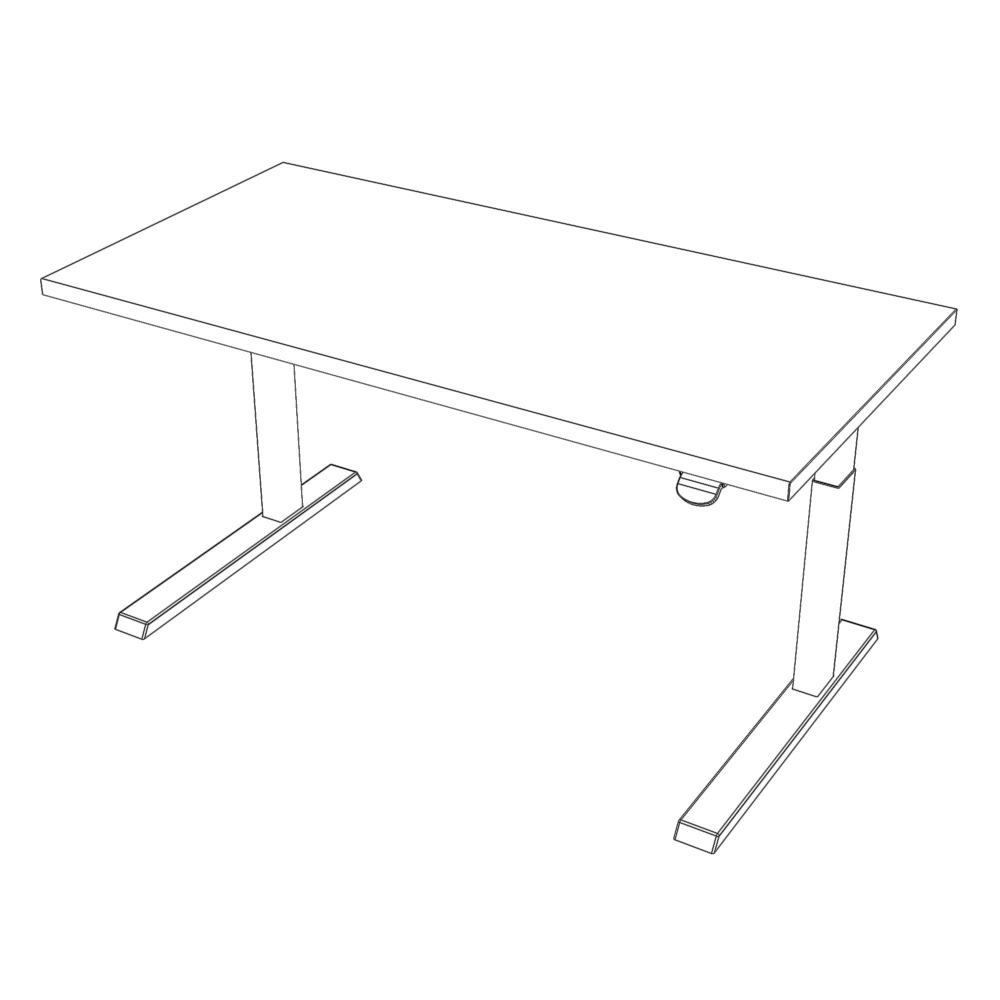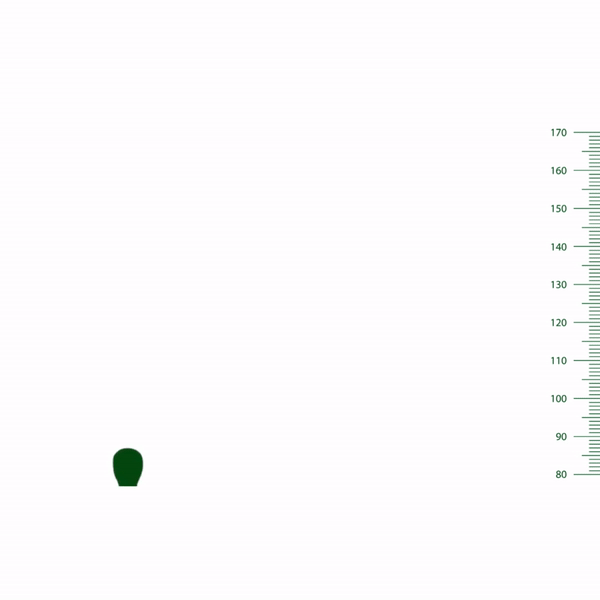Stableron height has become a topic of intrigue for aviation enthusiasts and professionals alike. The stableron, an integral component of an aircraft's tail assembly, plays a crucial role in maintaining stability and control during flight. Understanding the dimensions and functionality of this critical aerodynamic surface is essential for anyone interested in aviation technology. This article dives deep into the subject, exploring the significance of stableron height, its impact on aircraft performance, and addressing common questions surrounding this engineering marvel.
As the aviation industry continues to evolve, the design and engineering of aircraft components like the stableron have undergone significant advancements. The height of the stableron is not just a random specification; it is meticulously calculated to ensure optimal performance. From improving flight dynamics to enhancing safety, the height of this component affects numerous aspects of an aircraft's operation. In this article, we will delve into the intricacies of stableron height, providing insights that are both informative and actionable for readers.
Whether you're a seasoned aviator or a curious individual fascinated by the mechanics of flight, this article aims to demystify the complexities associated with stableron height. By addressing key questions and offering expert insights, we hope to equip you with a comprehensive understanding of this vital aspect of aviation technology. Let's embark on this journey to explore the world of stableron height and its implications for modern aviation.
Read also:Colin Jost And Scarlett Johansson A Journey Into Their Love Story And Careers
What Exactly is Stableron Height?
The term "stableron height" refers to the vertical dimension of the stableron, a combination of the stabilizer and rudder in an aircraft's tail section. This component is designed to provide enhanced control and stability during flight. The height of the stableron is a critical parameter that influences the aerodynamic characteristics of the aircraft. By adjusting the height, engineers can fine-tune the performance of the aircraft, ensuring it meets the required standards for safety and efficiency.
Why Does Stableron Height Matter?
Understanding why stableron height matters involves examining its role in various aspects of flight dynamics. The height affects the aircraft's ability to maintain balance during different flight phases, including takeoff, cruising, and landing. A properly designed stableron height ensures that the aircraft can handle crosswinds and turbulence effectively. Moreover, it contributes to the overall stability of the aircraft, making it easier for pilots to control.
How Does Stableron Height Impact Aircraft Performance?
Stableron height directly impacts the performance of an aircraft in several ways. For instance, a taller stableron can provide greater control authority, allowing the aircraft to respond more effectively to pilot inputs. Conversely, a shorter stableron may result in reduced stability, potentially compromising safety. Additionally, the height affects the aircraft's ability to counteract external forces such as wind shear. By optimizing the stableron height, engineers can strike a balance between performance and safety, ensuring the aircraft operates efficiently under various conditions.
Can Stableron Height Be Adjusted?
The question of whether stableron height can be adjusted is a common one among aviation enthusiasts. While the height is typically determined during the design phase, there are instances where modifications may be necessary. These adjustments are usually made during the testing and certification process to ensure the aircraft meets all regulatory requirements. However, altering the stableron height post-production is a complex task that requires careful consideration and expert engineering skills.
What Are the Key Factors Influencing Stableron Height?
Several factors influence the determination of stableron height, including the aircraft's size, weight, and intended purpose. For commercial airliners, the height is calculated to accommodate the large number of passengers and cargo, ensuring stability during long-haul flights. Military aircraft, on the other hand, may have different requirements, focusing on agility and maneuverability. Other factors such as aerodynamic efficiency and structural integrity also play a significant role in determining the ideal stableron height.
Is Stableron Height the Same for All Aircraft?
No, stableron height varies significantly across different aircraft models and types. The height is tailored to meet the specific needs of each aircraft, taking into account its design and operational requirements. For example, a regional jet may have a different stableron height compared to a wide-body aircraft. This variation ensures that each aircraft performs optimally in its intended environment, providing a safe and comfortable flying experience for passengers.
Read also:Discover The Ultimate Movie Experience At Ogden Movies Newgate Mall
What Are the Benefits of Optimizing Stableron Height?
Optimizing stableron height offers numerous benefits, both for the aircraft and its operators. Firstly, it enhances the overall stability of the aircraft, reducing the likelihood of accidents caused by loss of control. Secondly, it improves fuel efficiency by minimizing drag and optimizing aerodynamic performance. Additionally, a well-designed stableron height can extend the lifespan of the aircraft by reducing stress on critical components. These benefits make it an essential consideration for aircraft manufacturers and operators alike.
How Can Pilots Leverage Stableron Height for Better Control?
Pilots can leverage the advantages of stableron height to achieve better control during flight. By understanding the impact of stableron height on aircraft performance, pilots can make informed decisions regarding flight maneuvers and adjustments. For instance, during turbulent conditions, a taller stableron can provide greater stability, allowing pilots to maintain control more easily. Similarly, during landing, the height can assist in counteracting crosswinds, ensuring a smoother touchdown.
What Should You Consider When Evaluating Stableron Height?
When evaluating stableron height, several considerations should be taken into account. Firstly, the aircraft's intended use and operating environment must be assessed to determine the optimal height. Secondly, regulatory requirements and industry standards should be reviewed to ensure compliance. Finally, the impact of stableron height on overall aircraft performance should be evaluated, considering factors such as stability, control, and efficiency. By carefully considering these aspects, stakeholders can make informed decisions regarding stableron height.
What Are the Challenges Associated with Stableron Height?
Despite its benefits, stableron height presents certain challenges that must be addressed during the design and manufacturing process. One of the primary challenges is achieving a balance between stability and maneuverability. A taller stableron may enhance stability but could reduce agility, while a shorter one may improve maneuverability at the cost of stability. Additionally, structural integrity and weight considerations must be carefully managed to ensure the stableron can withstand the stresses of flight. Overcoming these challenges requires innovative engineering solutions and rigorous testing.
What Innovations Are Shaping the Future of Stableron Height?
The future of stableron height is being shaped by advancements in materials science, aerodynamics, and engineering techniques. New lightweight materials are being developed to reduce the weight of the stableron while maintaining its structural integrity. Additionally, computational fluid dynamics (CFD) simulations are being used to optimize the aerodynamic performance of the stableron, ensuring it operates efficiently under various conditions. These innovations promise to enhance the capabilities of aircraft, making them safer, more efficient, and environmentally friendly.
How Can You Stay Updated on Stableron Height Developments?
Staying updated on the latest developments in stableron height involves following industry news, attending conferences, and engaging with aviation experts. Subscribing to reputable aviation publications and joining professional networks can provide valuable insights into emerging trends and technologies. Additionally, participating in online forums and discussions can offer opportunities to exchange knowledge and ideas with fellow enthusiasts. By staying informed, you can gain a deeper understanding of the role stableron height plays in modern aviation.
Conclusion: Embracing the Importance of Stableron Height
In conclusion, stableron height is a critical aspect of aircraft design that significantly impacts performance, safety, and efficiency. By understanding its role and considering the factors that influence it, stakeholders can make informed decisions that enhance the capabilities of their aircraft. As the aviation industry continues to evolve, innovations in stableron height will play a vital role in shaping the future of flight. Whether you're a pilot, engineer, or aviation enthusiast, embracing the importance of stableron height is essential for staying ahead in this dynamic field.
Table of Contents
- What Exactly is Stableron Height?
- Why Does Stableron Height Matter?
- How Does Stableron Height Impact Aircraft Performance?
- Can Stableron Height Be Adjusted?
- What Are the Key Factors Influencing Stableron Height?
- Is Stableron Height the Same for All Aircraft?
- What Are the Benefits of Optimizing Stableron Height?
- How Can Pilots Leverage Stableron Height for Better Control?
- What Should You Consider When Evaluating Stableron Height?
- What Are the Challenges Associated with Stableron Height?


